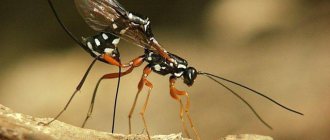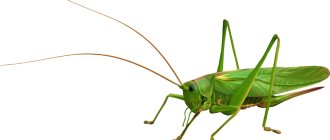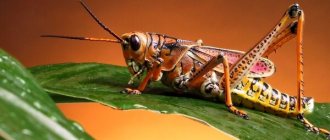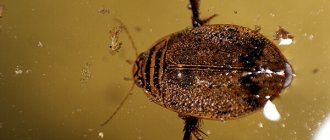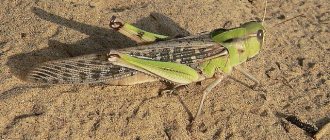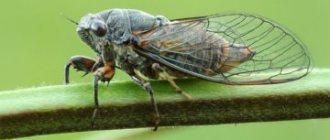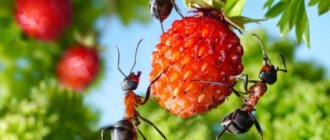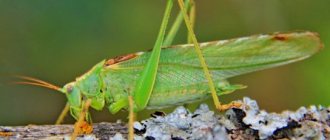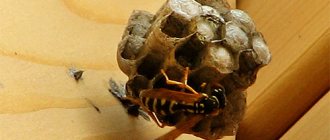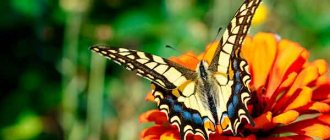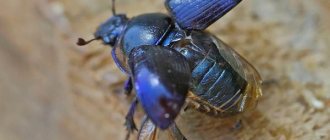The parasite (insect) is a beneficial parasite that monitors the number of pests in fields and gardens, preventing them from breeding in large numbers. The insect received this name because it lays eggs in the body of the victim, sitting astride it, while bending its elastic abdomen with the ovipositor well. The mechanism of nature for maintaining the numbers of many species of individuals is so intricate that it can be difficult for people to unravel it without harming themselves and the natural environment.
Insect riders: general information
The description of these parasites is quite interesting. The diversity of insect forms is combined with the abundance of their varieties. The largest species reaches 5 cm in length, and the smallest – up to 0.5 mm. Riders have long antennae, their bodies are very thin. They are often black with gold and red patterns. Most pests have colorless wings, but wingless specimens can also be found. Females carry an ovipositor on the back side, which can even exceed the length of their body.
What kind of wasps are found in Russia?
Crabronids (sand wasps)
Compared to the tropics, the Russian climate is poorly suited for most riders. And yet, in Russian latitudes they are also found, although less frequently. The most common types:
- Mimarommatids. A tenacious detachment, whose representatives live even in the subantarctic. They lay their eggs on the eggs of other arthropods.
- Mutillids (German wasps) are distinguished by their attractive appearance and bright colors. Over 4 thousand species of mutilids are found in nature, and in all of them the males are larger than the females. The size does not exceed 3 cm, and the body is covered with hard hairs. They lay eggs on wasps, bees and flies.
- Nutcrackers. Like relatives, they lay offspring on insects. Adults feed on plant juices.
- Proctocorpoid riders. An adult has a microscopic body length of a maximum of 5 mm. In agriculture they have found application as a means of biological protection against pests.
- Chalcides. One of the most numerous orders, which includes up to 200 species. Its representatives are highly valued in agriculture because they destroy those insects that pose a threat to pollinators.
- Evanioid wasps. They differ in their special body structure. Their abdomen is raised from the chest. They leave offspring on other types of wasps, on cockroaches and sawflies, for which they have gained fame as protectors of the forest.
- Typhia. About 20 species are found in Europe, and another 30 in Russia and the CIS countries. The body length of an adult does not exceed 1 cm. They usually have a black body color and brown wings. They prefer to lay eggs on beetles: dung beetles, May beetles and others. A rare case of symbiosis, since the victim does not die immediately, but continues to coexist with the wasp larva.
Japanese hornet
For your information! In the United States, the most common species is pompilidae (road wasps), which live in nests that are built in the ground, often along roadsides. They lay their eggs mainly on large spiders. In total there are about 4900 species of pompilids.
Crabronids (sand wasps) are common in Europe, over 600 species in total, but in total there are about 8 thousand varieties known, found throughout the planet. They usually make holes in the sand, where larvae are raised in nests. Food (bees, other wasps, other hymenoptera) is delivered to them by adult individuals, paralyzing the victims with their poison.
The remaining very numerous families of ichneumon wasps prefer the hot and humid climate of the tropics and subtropics. In the relict forests of the Amazon you can find unique insects up to 8 cm in length. It is noteworthy that scientists still continue to find new species, while a considerable number of unique insects are so rare that they can be classified as endangered.
The process of laying eggs
Such parasites are treasure hunters by nature. Distinguished by their excellent sense of smell, they run along dried up tree posts and look for walled-up larvae of longhorned beetles and golden beetles under the bark. At times, riders (insects) fly around the trunk in a curve, looking for the place where a large beetle larva was buried under the bark. And it’s even difficult to imagine how they can feel the larva through such dense bark.
Having found an area, the parasite settles on the bark of a pine tree and begins to pierce it with its ovipositor. Therefore, in most ichneumon races the ovipositors are enormously long; in some species they are even 7.5 times longer than the body. This is a whole drilling device. At first, the insect removes the “case” in which its “installation” was stored to the side, then it stands “on tiptoe” and slowly screws a thin sting into the bark. Along with this, the parasite is forced to spin, screwing the ovipositor deeper.
The drilling operation sometimes lasts several hours. Thanks to its special structure, the thin ovipositor easily passes through the thick bark of a tree, piercing into a hidden prey larva at a depth of 2-3 cm. Then the egg passes through this ovipositor.
What to do if a wasp bites a person?
In some cases, hypersensitivity to the sting of a parasitic wasp wasp has been recorded. An allergic reaction occurs in young children and people with reduced immunity. To prevent anaphylactic shock or angioedema, it is recommended to provide first aid to the victim in a timely manner.
Symptoms and consequences
Most often, a wasp sting does not show up on the skin. But with a strong concentration of toxins that the insect injects during an attack, a slight redness appears. Itching and swelling may also occur. The most dangerous consequence of an encounter with a rider is considered to be scratching the wound. In this way, a person can independently introduce an infection. Symptoms of infection are swelling and tearing of the stung area, the formation of an abscess, and a rash.
If redness does not go away after 5 days, you should consult a doctor. To determine the diagnosis and prescribe treatment, the victim is given a referral for a scraping from the bite site, a general blood and urine test.
First aid
After a wasp attack, you should wipe the bite site with an antiseptic. Fukortsin, Miramistin, hydrogen peroxide or alcohol (vodka) are suitable for this. If pain occurs, you can take analgesics and antispasmodics. To prevent the development of swelling, redness and rashes, anti-inflammatory medications are needed.
Types of riders (insects)
There are many varieties of such parasites: very small (less than 1 mm) and quite large (more than 2 cm). Some have an ovipositor several times wider than itself, while others have it tiny. There are individuals that destroy pest eggs, while other species parasitize living larvae, even overwintering in them. Some paralyze the victim before laying eggs, others do not.
Most adult insects feed on flower pollen (phacelia, dill), nectar, hemolymph of the victim, or sweet secretions of aphids. Many species do not feed at all, since they have formed eggs that only need to be laid. Of course, the female lays the eggs, and only she has the ovipositor.
Lifestyle and habitat of long-tailed wasps
The predominant habitat of most of the 100 thousand species of ichneumon wasps present today is the tropics. In temperate latitudes (in Russia) only a few varieties can be found. What they all have in common is the laying of eggs or larvae on or directly into the body of caterpillars and other insects. Not everyone is capable of stinging.
Wasp wasps do not look too threatening, especially those found in Russia. Their size ranges from 3 mm to 3 cm in length, and the chance of meeting the largest representatives is extremely low due to their extreme rarity. All types have different colors: from translucent to rich black.
Wasp rider
For your information! The insect has 6 legs, an elongated abdomen ending in a sharp ovipositor, a thin waist, transparent or colored wings, most similar to the wings of a dragonfly. There are species of wasps without wings at all, very similar to ants. A wasp with a long tail looks interesting.
Riders do not have a sting. Instead, there is a long ovipositor. However, the insect is quite capable of causing harm, since a special poisonous secretion is released from the ovipositor. Having pierced the skin of the enemy with its sharp end, the wasp injects poison, which has a paralyzing effect, although it does not pose a danger to the life of the insect. All riders are parasites, which are divided into 3 groups:
- ectoparasites that attach eggs and larvae to the body surface of other arthropods;
- endoparasites that introduce eggs into the body of other insects, using paralyzing poison;
- superparasites that are capable of infecting their own kind.
Eulophus
Such a parasitic ichneumon is an external group insect of the winter moth caterpillars, some specimens of butterflies, the ancient moth, leaf rollers, cutworms, moth moths, fruit moths, and others. At different periods, the death of winter moth caterpillars was noted at 27-37% from this parasite.
The size of an adult eulophus is no more than 2 mm. His body is silver in color. The ichneumon pupae overwinter in groups near the remains of the larvae, on fallen leaves, and rarely in the surface layer of soil under wood.
Beneficial ichneumon insects fly out of cocoons after overwintering, in the second half of May, at the stage of mass flowering of cherries, pears, mid-season varieties of currants, apple trees, cherries and plums. The flight of the parasite lasts approximately 2 weeks and ends at the beginning of the summer season. Eulophus are fed with nectar from weeds and flowers of fruit crops in garden plots. Since the winter moth caterpillars are absent from the garden at this time, the insects look for the larvae of other pests (leaf rollers, cutworms) and infect them.
By August, the larvae of the new generation have already finished feeding, pupate, firmly attaching themselves to the leaf, and after leaf fall ends, they move to the winter hut in fallen leaves or make their way into the surface layer of the earth.
Wasp wasp: is the adult dangerous?
An important question that interests people: “Does the ichneumon wasp cause harm or benefit to agriculture, and is it dangerous to humans?” A short answer can be presented in the form of the following theses:
- the insect is dangerous only for sensitive people with a high probability of an allergic reaction;
- the ichneumon wasp contributes to the destruction of garden and agricultural pests;
- the number of adults in the apiary should be limited, as they destroy bees.
All representatives of wasps bite painfully, but the species in question never attacks a person. The rider is not characterized by aggressive behavior; she always tries to avoid contact with people and disappear from their field of vision.
If the black wasp was forced to attack a person, it stings, squirting out a dose of poisonous substance. The bite feels like an ant's. Don't worry about the consequences. Adults do not use the human body to lay eggs. The ichneumon wasp may only pose a danger to sensitive people with a high likelihood of developing an allergic reaction. At the site of the bite, they develop a large red spot and swelling. In severe cases, there is a rash on the body and deterioration in health.
It is worth mentioning separately the role of the wasp for agricultural and garden crops. Adults often choose plant pests as victims. Therefore, their presence in the garden will only be beneficial. But their presence in the apiary should be limited; adults cause significant harm to bees.
Panisk
These are large parasitic insects. The riders look like huge red mosquitoes, they fly into the light of a lamp and are distinguished by short ovipositors. 40 species of nocturnal moths parasitize caterpillars, including winter worms and cutworms, which cause considerable damage to winter crop plantings. They attach 3 eggs to the back of the caterpillars, and the larvae soon hatch from them and press tightly against the pests until the period when they need to weave a pupa and pupate.
Character and lifestyle
Equestrians most often settle near water bodies among flowering grasses, needing high air humidity. Adult representatives of this family usually begin active activity at night, looking for hosts for the larvae in which they implant them.
Parasitic insects have an extraordinary sense of smell. For example, flying over a tree or climbing its trunk, through the thickness of the bark they are able to accurately sense where beetle larvae are deposited, which can become their prey.
Is the parasitic insect dangerous for humans ? Representatives of this family are rather useful creatures for people. They are invisible protectors of forests, ridding plants of bark beetles and voracious caterpillars. Many species of ichneumon fly are of great benefit by destroying insect pests. And they are specifically used by humans for such purposes in agriculture.
The parasites parasitize several tens of thousands of pests that destroy crops. Protecting food warehouses and fields with the help of riders makes it possible to significantly reduce the amount of poisons used that are harmful to health and the environment.
Riders do not pose a danger to people. However, there are some types of riders that are quite capable of biting. Such specimens resemble wasps. They can give a person unpleasant sensations. But in general, the bite of the ichneumon ichneumon is completely safe.
Rissa
This species of riders has a large ovipositor. They infect pests that feed on wood. The parasite is also common in Russian forests. The insect is black in color with yellow stripes on the abdomen and spots on the chest. They have a well-developed sense of smell, which helps them detect longhorned beetles and horntail beetles that live under the bark of a tree in a recess of several centimeters. The ichneumon ichneumon (insect) drills a hole in the bark for a long time. Risses lay eggs directly into the passage eaten by the horntail larva. The larvae of these beneficial parasites first feed on the host's hemolymph and then consume internal organs.
Reproduction and lifespan
Insects usually reproduce most actively during rainy summers, which causes their numbers to increase sharply. The parasitic insect inserts eggs into the bodies of victims. At the same time, special viruses are injected into the body of the carriers (hosts), completely subjugating the immune system.
The eggs hatch into cubs that feed on the internal organs of their carriers, from which they soon die. Moreover, victims can remain viable even if only a tenth of their internal mass remains.
This usually happens just before pupation or after winter hibernation. Parasitism of larvae manifests itself in different ways; some choose one type of insect as carriers, while others can use different types of hosts.
There are also several ways to implement such functions. Ectoparasites select insects as carriers that develop inside wood and various fruits, introducing their eggs in the immediate vicinity of the victim or in them themselves. Superparasites harm other parasites. There are also superparasites of higher orders.
For this reason, attempts to breed wasps to kill agricultural pests are not always successful. But they only give impetus to the emergence and reproduction of other species of equestrians, which parasitize their relatives, significantly reducing their numbers. In this way, nature tries to maintain balance. The moths lay eggs on caterpillars and use paralyzing poison against the victim.
And after half a day, larvae hatch on the carrier, of which there are usually about two dozen. They go through all stages of development in a few days, leading to death of the victim. Having pupated and transitioned to adulthood, they themselves do not live long.
The exact period depends on gender. Females can live for about a month. Males do not exist for more than ten days. Some species of ichneumon live much longer. If wintering is successful, their life cycle can last up to 9 months.
Aphelinus, aphidiid, aphidius
They are small parasitic parasites mainly on aphids. When an insect detects an aphid, it tucks its abdomen between its legs, quickly pierces it with its ovipositor and jumps away so that it does not spray it with the protective secretions of its tubes. Aphelinus lay only 1 egg in aphids. Their larvae form in it, and over time it turns into a mummy.
The benefits of equestrians in agriculture
In different species of ichneumon ichneumon, the number of eggs can range from 15 to 15 thousand. Moreover, it is not at all necessary that the offspring of wasps that lay a small number of eggs will be small, since several thousand larvae can hatch from one egg.
All species of wasps are parasites. At the same time, they lay their eggs in the bodies of the victims so that the victim remains alive and the larva feeds on it during its development. At first, the larva eats only fat and does not touch vital organs, and then proceeds to the rest.
The riders are slowly but surely destroying their “living incubator”
Numerous crop pests mainly become victims of riders. In this regard, people have long bred equestrians to protect vegetable gardens and fields. Most often, the egg-eating parasites Trichogramma are used for these purposes, which infect the eggs of cabbage moths, codling moths and cotton bollworms.
Ageniaspis
Considered one of the original designs. The parasite (insect) specializes in infecting the apple moth egg, however, it does not mature for a long time, but waits for the caterpillar itself to develop. Then from this egg many twins appear. From the eaten larvae, 150-200 ageniaspis are hatched.
The record holder for fertility is plastigaster. It mainly parasitizes the Hessian grain fly. The female infects both young larvae and eggs, laying up to 3000 eggs during her life.
No less popular is encarsia, which lays its eggs on the larvae of the greenhouse whitefly. Almost all greenhouse agricultural companies propagate it.
Life cycle and mechanism of influence on the victim
The ichneumon wasp is a solitary insect; it makes its nest directly in the ground or in plant stems or tree bark. Its lifespan, as a rule, is short: for females it is about a month, and for males it is no more than 10 days. In some species, the larvae can overwinter in the body of the prey host and pupate only in the spring.
For the most part, adults are not carnivores, that is, they do not feed on other insects; For some species, nectar serves as food. But the larvae can be considered true parasites, given how reproduction occurs.
Female wasps lay eggs on the bodies or larvae of ants, wasps, beetles, caterpillars, spiders and even scorpions, on which the hatching larvae feed. During the process of laying eggs, the female parasite sits on top of her victim, resembling a rider on a horse, which gives the name to this entire family.
This parasitic insect has an amazing sense of smell, which allows it to sense even through the thickness of tree bark whether there are beetle larvae there on which to lay eggs.
By laying their eggs on the body of the victim, the females inject it with a paralyzing poison, turning it into a “zombie”. It takes less than a day for about two dozen larvae to hatch on a victim, and only a few days for them to go through all stages of development.
Throughout this period, they feed on the body of their “master”, while maintaining the viability of his body; it dies from exhaustion only before the time comes for the larvae to pupate.
What do beneficial parasites usually eat?
Most species of such insects do not eat meat. The adult rider (insect) eats the nectar of flowers and hunts to continue its lineage. There are mature individuals that do not feed on anything at all. However, parasites are very fond of drinking, gathering near lakes and feasting on dew. They exist for no more than 2 months, some of them are evening or nocturnal insects. But at the same time, the favorite and main food of riders are:
- mealybugs;
- cicadas;
- sawflies;
- scale insects;
- aphid;
- bedbugs;
- pest butterflies;
- flies;
- whiteflies;
- burners;
- beetles;
- blood aphid.
Many will be interested to hear the answer to the question: “Is the insect rider dangerous for humans?” Absolutely not, and on the contrary, these parasites play an important role in nature, protecting garden plots with fruit trees and vegetables from the invasion of various pests.
Nutrition
Adult megarhyssa perlata, which prefer to consume the nectar of flowers themselves, introduce their larvae into pests that breed in the bark of trees, depositing them in the passages made by these insects.
And ichneumon larvae , being extremely active in search of food, find their own prey, attaching themselves to the body of the victim. Most adult parasites do not eat the flesh of other insects, and some do not even eat anything at all. But they are looking for a suitable object to saturate their larvae.
Prey for parasites can include wasps, ants, beetles and caterpillars, and in some cases scorpions and spiders. Braconids are used to feed barn moths and leaf roller butterflies, but they can also harm people’s supplies, spoiling spices, confectionery, dried fruits, grain and flour.
It is possible to defeat parasites!
Antiparasitic Complex® - Reliable and safe removal of parasites in 21 days!
- The composition includes only natural ingredients;
- Does not cause side effects;
- Absolutely safe;
- Protects the liver, heart, lungs, stomach, skin from parasites;
- Removes waste products of parasites from the body.
- Effectively destroys most types of helminths in 21 days.
There is now a preferential program for free packaging. Read expert opinion.
Read further:
What do mosquitoes eat, besides blood, females and males, in the swamp and in nature?
Roundworms: size, color, nature of movements, shape of eggs and larvae
What do lice eat on the human body, the lifestyle of parasites
What is Streptococcus anginosus and what danger does it pose to adults and children?
How roundworm leads a parasitic life
Domestic insect parasites: photos and names, control methods
Caterpillars borrow proteins from viruses to kill riders
Eastern moth caterpillar ( Mythimna separata)
)
Wikimedia Commons
Biologists have discovered that viruses that infect caterpillars kill the larvae of their competitors - ichneumon ichneumonids from the microgastrin subfamily - using special proteins. Moreover, some caterpillars, as a result of horizontal transfer, borrowed the genes of such proteins from viruses and began to produce them themselves to combat parasitoids. The results of the study were published in an article for the journal Science
.
The life of caterpillars is full of dangers. They are threatened not only by predators, but also by a variety of parasites, parasitoids and infections. For example, caterpillars are parasitized by the larvae of many ichneumon wasps, which gradually eat their hosts alive. In addition, future butterflies suffer from a range of viruses, some of which quickly kill their victims, while others develop in them gradually. Because the ichneumon wasps and the viruses compete for the same resource (the caterpillar's flesh allows the ichneumon larvae to grow, and the viruses to make new copies), they have to learn to get along with each other or enter an evolutionary arms race. Thus, zoologists know of cases where wasps use domesticated viruses to suppress the immunity of their hosts.
A team of specialists, led by Madoka Nakai from the Tokyo University of Agriculture and Technology, described a previously unknown aspect of the relationship between caterpillars, parasites and viruses. Experiments with eastern cutworms ( Mythimna separata
) researchers have found that the larvae of the braconid ichneumon wasp
Cotesia kariyai
survive and develop poorly in caterpillars infected with a species-specific entomopoxvirus (
Mythimna separata
entomopoxvirus; MySEV).
C. kariyai
free of the virus do not encounter any problems.
However, the larvae of Meteorus pulchricornis
, another species of braconid ichneumon parasitizing eastern cutworms, are not affected in any way by MySEV.
Hemolymph purified from viral particles from the body of a caterpillar infected with MySEV turned out to be toxic to C. kariyai
, as well as some other ichneumon wasps from the subfamily
Microgastrinae
:
Apanteles glomeratus
,
Microplitis manilae
,
Cotesia ruficrus
and
Apanteles adoxophyesi
.
The species M. pulchricornis
belongs to the subfamily
Euphorinae
, and for its larvae the hemolymph of caterpillars infected with the virus turned out to be harmless.
Nakai and her co-authors were able to establish that microgastrin ichneumon wasp larvae are killed by a specific protein weighing 28 kilodaltons, which was found in the hemolymph of caterpillars infected with entomopoxvirus. They called it parasitoid killing factor (PKF). Later in the fat body of M. separata
the authors identified a 54-kilodalton protein that is likely a precursor to what circulates in the hemolymph.
In the next step, the researchers discovered that proteins homologous to PKF are characteristic of three groups of double-stranded DNA viruses: Ascoviridae
,
Baculoviridae
and
Entomopoxvirinae
.
Each type of virus can have from one to five anti-parasitoid proteins. The presence of genes encoding PKF homologues has also been identified in the genomes of caterpillars of certain lepidopteran species. Apparently, they received these genes through several independent events of horizontal transfer from viruses (the exchange of genes responsible for the production of PKF also occurred between viruses). This is indicated by the fact that, while the PKFs of related viruses have much in common, the PKFs of different butterfly species are similar to the PKFs of different viruses. For example, antiparasitoid proteins of butterflies from the genera Helicoverpa
and
Heliothis
resemble proteins of baculoviruses.
And in the butterflies Trichoplusia ni
,
Mamestra configurata
and three species from the genus
Spodoptera
, the PKFs are more diverse and resemble the PKFs of viruses from all three groups mentioned above.
To test whether the PKFs of other viruses are harmful to ichneumon wasps, Nakai and her colleagues infected eastern fall armyworm caterpillars with the ascovirus HvAV-3j, which is common to Heliothis virescens
.
Based on genetic analysis, this virus can produce three anti-parasitoid proteins. As the authors expected, the virus interfered with the development of C. kariyai
, but did not cause any damage
to M. pulchricornis
.
The hemolymph of HvAV-3j-infected Spodoptera litura
was also toxic to microgastrin parasites, but not to euphorinae and ichneumonids (
Ichneumonidae
).
Isolating Mamestra configurata
two types of alpha baculoviruses, MacoNPV-A and MacoNPV-B, the researchers obtained several strains of each.
Some strains contained candidate genes likely responsible for PKF production, and some did not. Trichoplusia ni
infected with
Cotesia vanessae
then injected with different strains of alpha-baculoviruses.
As a result, in individuals that were injected with strains with candidate genes, parasitoid larvae grew significantly worse. Additional analysis showed that a specific gene, orf57,
.
Nakai and his co-authors then turned to butterflies capable of independently producing PKF. They focused on representatives of the genus Spodoptera
, in which the two genes required for this are expressed at all stages of the life cycle and in all major tissues of the caterpillars.
Experiments have shown that the ichneumon parasites of C. kariyai
are not able to develop in spodoptera caterpillars, but the euphorines of
M. pulchricornis
successfully parasitize them.
Treatment with hemocyte-free Spodoptera exigua
killed 90 percent of
C. kariyai
.
However, hemolymph taken from caterpillars in which one of the genes responsible for the synthesis of PKF was switched off turned out to be much less dangerous for these ichneumon ichneumon wasps (switching off the pkf1
reduced mortality more than switching off
pkf2
).
Moreover, when the scientists mixed the hemolymph of two caterpillars, each of which had one of the two PKF-producing genes turned off, the mortality rate of the treated ichneumon ichneumon larvae was no longer different from the control. Interestingly, treatment with S. exigua
slightly increased the mortality of
M. pulchricornis parasites.
However, this effect did not depend on whether the
pkf1
and
pkf2
, so it is not associated with the PKF proteins.
In the last step, the authors tried to figure out exactly how the PKF proteins kill the riders. To do this, they treated C. kariyai
hemolymph of eastern fall armyworms purified from viral particles that were infected with MySEV.
This led to DNA fragmentation and apoptosis of parasitoid cells. M. pulchricornis
wasp cells were not affected by treatment with hemolymph from infected caterpillars.
A similar effect was produced by the hemolymph of S. exigua
, which produces PKF independently. Thus, PKF kill microgastrin riders and prevent them from developing, causing them to undergo apoptosis.
microgastrinae ichneumonids.
. This is beneficial for riders from other groups who are immune to PKF, because thanks to the viruses they have less competition. Perhaps such riders even form a kind of evolutionary conspiracy with viruses, because they are the ones who carry viruses from the group of ascoviruses that produce PKF from caterpillar to caterpillar. At the same time, some butterflies were able to borrow viral genes responsible for the production of anti-parasitoid proteins and integrated them into their genome to combat parasitoid parasites. It was previously thought that insect immunity was primarily aimed at destroying newly laid parasitoid eggs, but the new discovery suggests that at least some caterpillars also have ways to resist newly hatched parasitoid larvae.
Previously, we talked about how male pteromalid ichneumon wasps learned to use their scent to find fly pupae, under the protective shell of which hide females of this species of parasitoids ready to fly. Having discovered such a pupa, the male can only wait for the females to emerge from it and mate with them.
Sergey Kolenov
